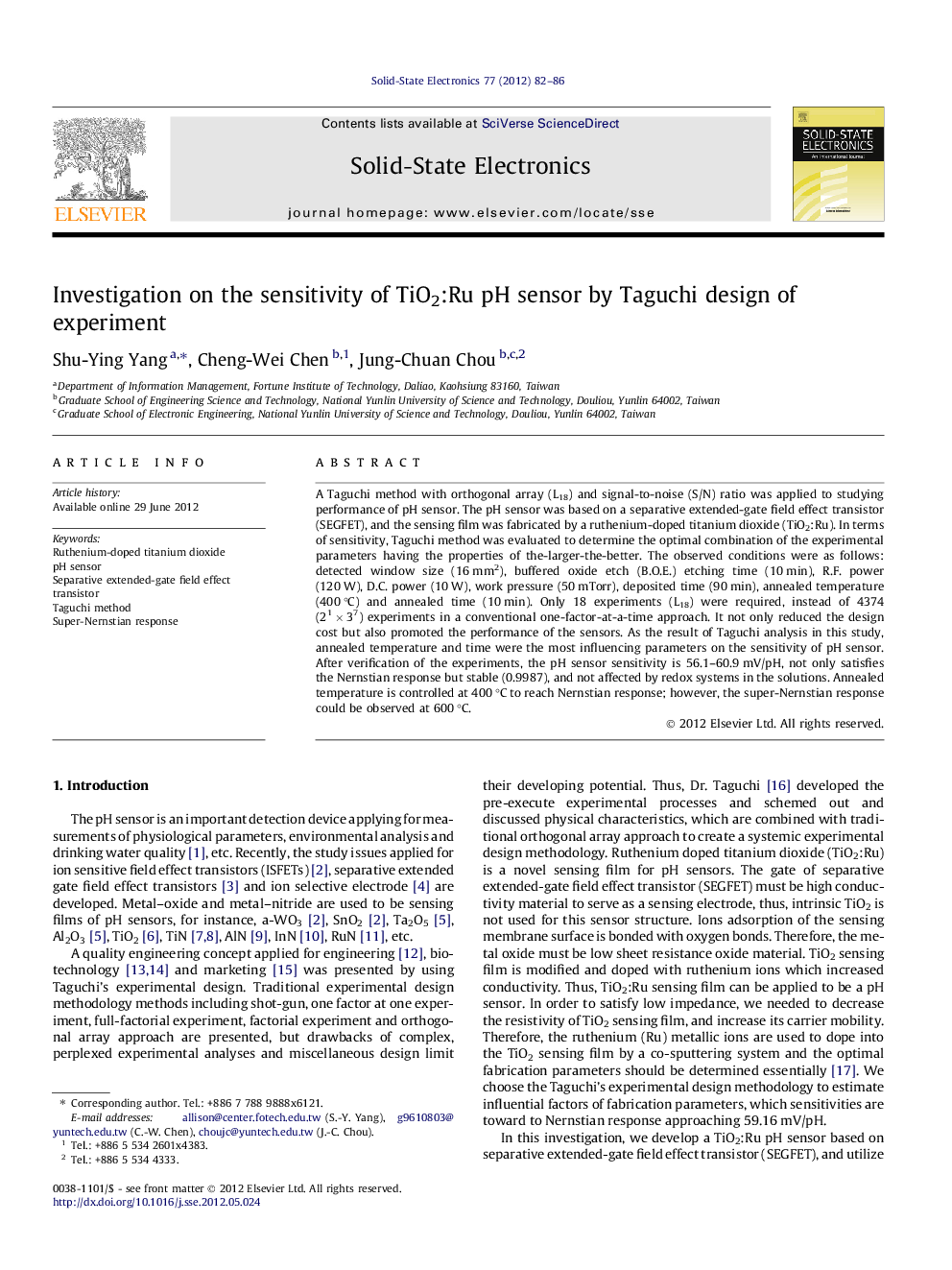| کد مقاله | کد نشریه | سال انتشار | مقاله انگلیسی | نسخه تمام متن |
|---|---|---|---|---|
| 746963 | 1462255 | 2012 | 5 صفحه PDF | دانلود رایگان |

A Taguchi method with orthogonal array (L18) and signal-to-noise (S/N) ratio was applied to studying performance of pH sensor. The pH sensor was based on a separative extended-gate field effect transistor (SEGFET), and the sensing film was fabricated by a ruthenium-doped titanium dioxide (TiO2:Ru). In terms of sensitivity, Taguchi method was evaluated to determine the optimal combination of the experimental parameters having the properties of the-larger-the-better. The observed conditions were as follows: detected window size (16 mm2), buffered oxide etch (B.O.E.) etching time (10 min), R.F. power (120 W), D.C. power (10 W), work pressure (50 mTorr), deposited time (90 min), annealed temperature (400 °C) and annealed time (10 min). Only 18 experiments (L18) were required, instead of 4374 (21 × 37) experiments in a conventional one-factor-at-a-time approach. It not only reduced the design cost but also promoted the performance of the sensors. As the result of Taguchi analysis in this study, annealed temperature and time were the most influencing parameters on the sensitivity of pH sensor. After verification of the experiments, the pH sensor sensitivity is 56.1–60.9 mV/pH, not only satisfies the Nernstian response but stable (0.9987), and not affected by redox systems in the solutions. Annealed temperature is controlled at 400 °C to reach Nernstian response; however, the super-Nernstian response could be observed at 600 °C.
► Taguchi’s experiment design was applied to studying the performance of pH sensor.
► The sensing film of pH sensor adopts ruthenium-doped titanium dioxide.
► Annealed temperature was the most influencing parameters on the sensitivity.
► Annealed temperature is controlled at 400 °C to reach Nernstian response.
► The super-Nernstian response could be observed at 600 °C.
Journal: Solid-State Electronics - Volume 77, November 2012, Pages 82–86